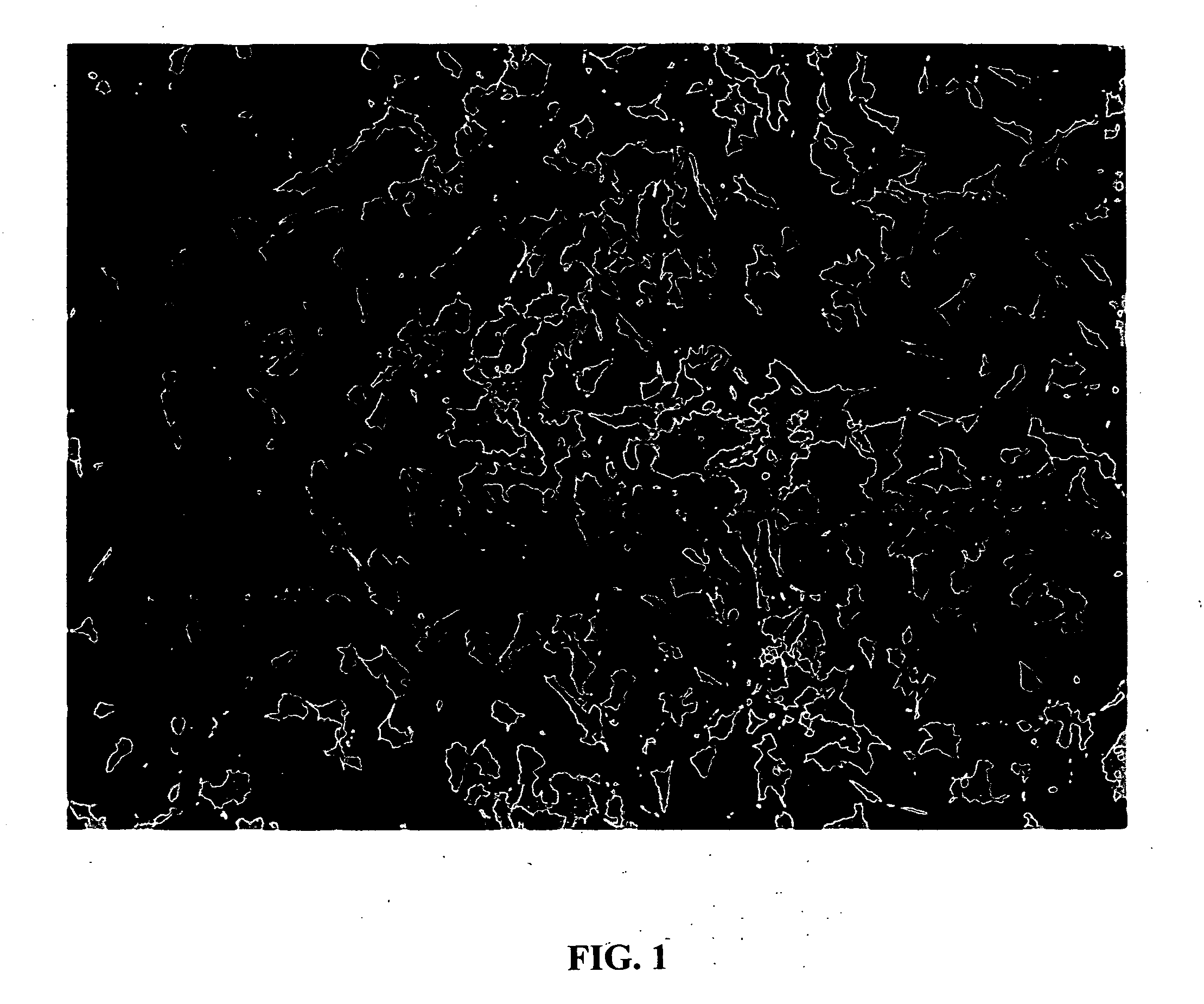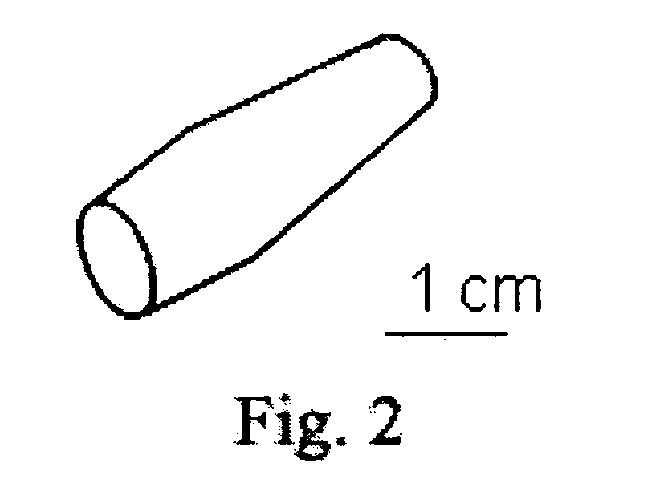Stem cell comprising tissue substitutes
- Summary
- Abstract
- Description
- Claims
- Application Information
AI Technical Summary
Benefits of technology
Problems solved by technology
Method used
Image
Examples
embodiment
Ceria Embodiment
[0058] As noted above, the biocompatible material preferably comprises a rare earth stabilized zirconia, most preferably being ceria stabilized zirconia. Ceria has been found by the inventors to have advantages over other material for stabilizing zirconia. Of the various zirconia ceramics currently available, ceria stabilized zirconia is the most stable against degradation under humid conditions and against leaching in aqueous environments, including body fluids. In addition, zirconium oxide, when used in conjunction with ceria provides unique oxygen ion conduction properties. To date, ceria stabilized zirconia has been widely used as a coating with excellent catalytic properties, such as a thermal barrier. However, there are no reported applications of ceria-stabilized zirconia for biomedical applications, such as for stem cell growth according to the invention. It should be noted the Ceria-stabilized Zirconia material is a biocompatible material, and the Ceria by i...
example 1
Stem Cell Adhesion
[0197] Simulated bone made of ceria stabilized zirconia was sterilized via dry cycle autoclave and co-cultured with human progenitor cells or stem cells in DMEM culture media supplemented with 10% bovine fetal serum for 24 hours. The porous prototype article was made by near-net shape plasma nanomanufacturing as described above. The human progenitor cells were cultured in a T75 tissue culture flask using media consisting of DMEM Gibco (Dulbeccos modified eagles medium). 10% FBS Novacell (Fetal Bovine Serum). 1% Antibiotic / Antimycotic Gibco till they reach approximately 80% confluency. The medium was decanted from flask into waste container and 5 ml of trypsin (0.25% Gibco / Invitrogen) was added to flask. The flask was incubated for 90 seconds @ 37° C and 10 ml of plain DMEM was added ip deactivate trypsin. Contents of flask (cell suspension) was decanted into a 50 ml conical tube. The cell suspension was centrifuged for 5 min @ 300 RPM, supernatant was removed from...
example 2
Biomedical Application
[0202] A porous, near-net shape ceria-stabilized zirconia article for a specific biomedical application was formed using a plasma spraying process. A scanned image of the article is shown in FIG. 2. The cylindrical shape and size were specifically designed for this application, simulating the shape and size of a bone segment. Thus, the plasma processing is an effective method for consolidation of nanomaterials to large near-net-shape components with the desired shape and size. The experimental parameters for developing of the Ceria-stabilized Zirconia component were selected as following: current: 850 Amps, primary Gas: Ar: 82 SCFH, secondary gas: He: 40 SCFH, powder feeding rate: 2.5 RPM, carrier gas: 13 SCFH.
[0203] It was found that when there is an increase of the ceria concentration in the Ceria stabilized Zirconia system, the amount of the tetragonal phase increases and the grain size of Zirconia decreases. An 18% Ceria content powder was used for plasma...
PUM
 Login to View More
Login to View More Abstract
Description
Claims
Application Information
 Login to View More
Login to View More - R&D
- Intellectual Property
- Life Sciences
- Materials
- Tech Scout
- Unparalleled Data Quality
- Higher Quality Content
- 60% Fewer Hallucinations
Browse by: Latest US Patents, China's latest patents, Technical Efficacy Thesaurus, Application Domain, Technology Topic, Popular Technical Reports.
© 2025 PatSnap. All rights reserved.Legal|Privacy policy|Modern Slavery Act Transparency Statement|Sitemap|About US| Contact US: help@patsnap.com


